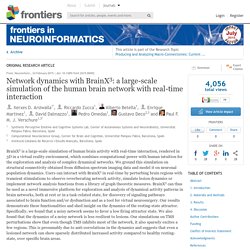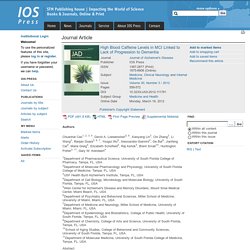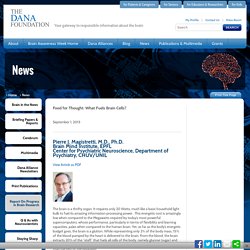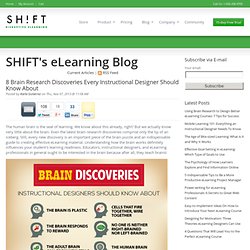

Medscape Log In. Radiol. Recently, indirect evidence has emerged that suggests gadolinium deposition may occur in patients with otherwise normal renal function.

Several studies have demonstrated progressive increases in T1-weighted MR signal in various central nervous system (CNS) structures following repeated gadolinium administration (14,15). However, these signal intensity changes are nonspecific and can be seen with several other pathologic conditions. Follow-up studies verifying the presence of neuronal tissue deposition of gadolinium with use of direct tissue assays on human subjects have been absent from the literature.
In the current study, we sought to confirm these initial reports of CNS gadolinium deposition with direct assessment of gadolinium accumulation in neuronal tissues among deceased patients previously exposed to multiple doses of intravenous gadolinium. Study Design and Population MR Imaging and GBCA Administration MR Imaging Data Analysis Tissue Processing Mass Spectrometry Statistical Analysis. The Human Brain - Credits. Department of Psychological Sciences. PNAS-2010-Tang-15649-52. MAC_FTD_Primer.pdf. 300.full.pdf. Frontotemporal Disorders: Information for Patients, Families, and Caregivers. 018929.full.pdf. A Small Part of the Brain, and Its Profound Effects. Medical Xpress. The boy whose brain could unlock autism. ON A RECENT VISIT to Lausanne, Kai wears a sky blue hoodie, his gray Chuck Taylor–style sneakers carefully unlaced at the top.

“My rapper sneakers,” he says, smiling. He speaks Hebrew and English and lives with his mother in Israel, attending a school for people with learning disabilities near Rehovot. His manner is unselfconscious, though sometimes he scowls abruptly without explanation. Somnulus. Test My Brain. Network dynamics with BrainX3: a large-scale simulation of the human brain network with real-time interaction. 1.

Introduction How should one visualize and simulate the large amounts of data being generated nowadays in neurobiology, in ways that could inform our understanding of the structure and function of the brain? Would that also link to clinical applications? High Blood Caffeine Levels in MCI Linked to Lack of Progression to Dementia - Journal of Alzheimer's Disease - Volume 30, Number 3 / 2012. Authors Chuanhai Cao1, 2, 3, 4, David A.

Loewenstein5, 6, Xiaoyang Lin3, Chi Zhang3, Li Wang3, Ranjan Duara5, 6, 7, Yougui Wu8, Alessandra Giannini4, Ge Bai9, Jianfeng Cai9, Maria Greig5, Elizabeth Schofield5, Raj Ashok3, Brent Small10, Huntington Potter3, 11, Gary W. Arendash4 Although both human epidemiologic and animal model studies have suggested that caffeine/coffee protects against Alzheimer's disease, direct human evidence for this premise has been lacking. In the present case-control study, two separate cohorts consisting of 124 total individuals (65–88 years old) were cognitively assessed and a blood sample taken for caffeine/biomarker analysis. Non-invasive Alzheimer’s treatment restores memory using ultrasound. Amyloid-β (Aβ) peptide – composed of some 36 to 43 amino acids – has been the plaque associated with the development and progression of Alzheimer’s disease for some time now.

As such, some research into removing this toxic substance from human brains has been conducted, but almost invariably requires invasive pharmaceutical intervention which is far from completely effective. The University of Queensland research, on the other hand, purports to offer a potential nonpharmacological approach for removing Aβ plaque. In support of this, the researchers claim to have restored memory function in the brain of a mouse that had Aβ deposited in its brain and displayed Alzheimer’s symptoms.
Abdul Rana MD, “Champion” of the Medical Niche of Parkinsonism Education, Doing Nightly Hangouts. By John Bennett MD February 26, 2015 We have been fortunate to have run into Abdul Rana MD, a Neurologist, and, according to his LinkedIn Profile, a “…..world renown Parkinsonism Educator….”.

We have created an affiliate station for him, at www.Parkinsonism.TV, and he has religiously been doing nightly Google Hangouts about Parkinsonism. He covers the full range of education about this disease, because he feels strongly that “Education is like Medication”. Anthony Zador Homepage. Zador-etal2012. Marblestone-etal2013.pdf. Jaramillo-etal2014. Znamenskiy-zador2013.pdf.
Anthony Zador Homepage. Medicine & Health & Science & Mathematics. Briefing Papers. Report on Progress - Articles. Food for Thought: What Fuels Brain Cells? View Article as PDF The brain is a thrifty organ.

It requires only 20 Watts, much like a basic household light bulb to fuel its amazing information processing power. Untitled. View Article as PDF The movement disorder, Parkinson’s disease (PD), the second most common neurodegenerative disease after Alzheimer’s, affects more than 1 percent of the worldwide population over 65.

Advancing age is the biggest risk factor for developing PD. As the population ages, it is imperative that we gain a deeper fundamental understanding of how the disease initiates and progresses so that we can develop successful therapies and preventives. In this article, we discuss genetic causes of PD and the impact environmental toxins may have on development of the disease. KIN450-Neurophysiology - home. My Experience with Anticonvulsants. Past, Present, and Future In the.
You Won't Believe The Effect The Internet's Having On Your Brain. Actually, You Will. 8 Brain Research Discoveries Every Instructional Designer Should Know About. 8 Brain Research Discoveries Every Instructional Designer Should Know About The human brain is the seat of learning.

We know about this already, right? But we actually know very little about the brain. Even the latest brain research discoveries comprise only the tip of an iceberg. Still, every new discovery is an important piece of the brain puzzle and an indispensable guide to creating effective eLearning material. 1. Have you heard the story of a constantly changing brain? Autism: The Truth is (not) Out There. Parents of a child affected by autism naturally want to know the cause. Autism can dramatically disrupt the typical childhood pattern of cognitive, behavioural and social development. At the most severe end, the child may require care for the rest of their lives. Even at the milder end, it may make mainstream education impossible and exclude many opportunities available to typically developing children.
Any parent would hope that knowing the cause could lead to better treatment and management options for their child. New Body Health. Prostaglandin signaling suppresses beneficial microglial function in Alzheimer’s disease models. J Clin Invest. Doi:10.1172/JCI77487. Copyright © 2014, The American Society for Clinical Investigation. Development and evolution at Structural Brain Mapping Group. Current Biology - Separate Processing of Different Global-Motion Structures in Visual Cortex Is Revealed by fMRI. Figure 1 A Schematic Description of the Motion Stimuli. Neuroimaging: Voodoo, New Phrenology, or Scientific Breakthrough? Introduction to Special Section on fMRI. Working Memory and Plasticity Laboratory. Brain Facts and Figures. Multitasking:This is your Brain on Media. Visual Processing: Cortical Pathways (Section 2, Chapter 15. The visual system is unique as much of visual processing occurs outside the brain within the retina of the eye.
The previous chapter described how the light-sensitive receptors of the eye convert the image projected onto the retina into spatially distributed neural activity in the first neurons of the visual pathway (i.e., the photoreceptors). Within the retina, the receptors synapse with bipolar and horizontal cells, which establish the basis for brightness and color contrasts.
In turn, the bipolar cells (the 2° visual afferent) synapse with retinal ganglion cells and amacrine cells, which enhance contrast effects that support form vision and establish the basis for movement detection. 10 Surprising Facts About How Our Brain Works. One of the things that surprises me time and time again is how we think our brains work and how they actually do. On many occasions I find myself convinced that there is a certain way to do things, only to find out that actually that’s the complete wrong way to think about it. For example, I always found it fairly understandable that we can multitask. Doctors track tapeworm’s wriggling, burrowing 4-year journey through UK man’s brain. A 50-year-old man reported to British doctors in 2008 that he had been suffering from headaches, memory problems, strange olfactory hallucinations and seizures. "Dyslexie" : la nouvelle police de caractères spécialement conçue pour les dyslexiques.
Foot businesss On apprend qu'il n'a jamais de carte bancaire ou d'argent sur lui Big Brother. Blue Brain Project. The Craving Brain. “All I want is a huge steak. A Cup of Joe – the Benefits of Coffee on Cognition. The vagus nerve as a living Kundalini serpent. How to Increase Dopamine Levels: Foods to Eat and What to Do. 11brain2axx__1231575167_0544.jpg (JPEG Image, 950 × 848 pixels) - Scaled (77%) As we sleep, speedy brain waves boost our ability to learn. Scientists have long puzzled over the many hours we spend in light, dreamless slumber. How Meditation Changes the Structure of Your Brain. Buddha's Brain: Neuroplasticity and Meditation. Carter_Presti_Callistemon_Ungerer_Liu_Pettigrew_CB_v15n11_PV. Stanford studies monks' meditation, compassion. Stanford neuroeconomist Brian Knutson is an expert in the pleasure center of the brain that works in tandem with our financial decisions - the biology behind why we bypass the kitchen coffeemaker to buy the $4 Starbucks coffee every day.
Wired 14.02: Buddha on the Brain. Center for Narcolepsy - Stanford University School of Medicine. Neuralgia - National Library of Medicine - PubMed Health. Neuroendocrine Theory of Aging. Memory Loss & the Brain. Exocrine gland. Acinus. Seizures and epilepsy. Sensory Processing Disorder (SPD) Sensory Processing Disorder Checklist. General Symptoms of SPD in Adults. Of Asperger Syndrome and the Neurodiversity Spectrum. Aspie-quiz. Search Results. Medical Neurosciences. Journal of Physiology - Table of Contents — October 1, 2013, 591 (19) Global Anatomy Home Page. Periaqueductal gray. THE BRAIN FROM TOP TO BOTTOM. Mind and Brain. Brain stuff. Le cerveau. New Mentality. New Mind Health.